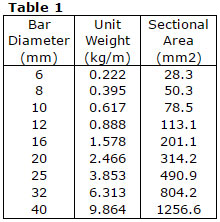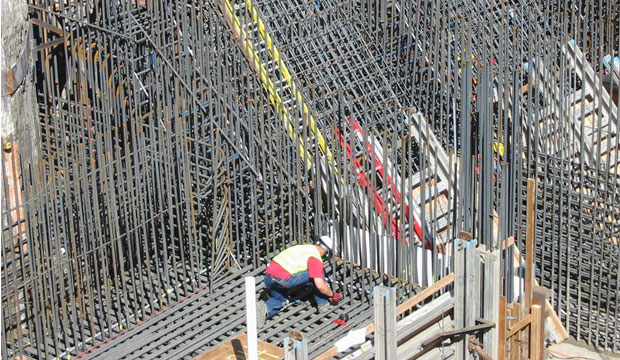
How to measure weights of Steel Bar Reinforcement in Reinforced Concrete Works

Reinforcement for Concrete Works include Round Bars, Deformed bars, and Welded Mesh fabric which are utilized in concrete slabs, walls, beams, columns. Computation of quantities of rebars for costing, is based on total weights provided in Kg or Tons.
For Normal Reinforcements
Go through the Table 1 given below to get Bar Reinforcement weights. Unit weight remains identical devoid of the bar is round, deformed, mild steel or high yield, unit weight is the same:

To acquire weights, just choose the Bar Diameter and the equivalent weights in kg/m and estimate as follows :
It is recommended to apply an easy to use spreadsheet to arrange the table.
For Mesh Reinforcement Fabric
Pre Welded Mesh rebars are generally utilized for slabs and walls, particularly rebars which contain large and identical areas because these are bought instantly, and arranged smoothly devoid of evaluating the quality or spacings.
Unit weight for Mesh Rebars are acquired from the manufacturer or adhered by the British Standards typical fabric types provided in the Table 2 below. Various Fabric Types are available on the basis of the standard applied. Therefore, a control by the manufacturer is required.
To determine Total Weights, just multiply the Unit Weight with the Covered Surface Area Covered.
The quantity takeoff process becomes simpler, methodical and perfect through a Spreadsheet in a table form and an exact take-off sheet.
For Slabs & Walls Reinforcements
Slabs and walls generally contain rebars in two direction in a mesh form as in Fabric layout, though the placing of rebars are not standard, eg: T16mm dia, 125mm x 200mm. To handle this, it is necessary to form an identical Unit Weights in kg/m2 with the purpose of obtaining the quantities on the basis of metre square devoid of considering individual bars.
Wastage in Rebars
To measure the quantities of rebars, due allowance is created for wastage and if required, a factor can be added for site, locality & local practices. Quantities are obtained with the nearest tons. For small projects, it is required to buy in Individual Bars and for this case, just change the total weights in kg to the adjacent standard delivery length, generally 12m.
Usually for wastage, it is recommended to use about 2.5% for standard cut and bent bars, 5% for standard precut lengths, and 10% for random lengths. For distant and complex site logistics, it is recommended to use 20% or more, whereas for easier logistics, purchase to nearest 12m length or tons is suggested.
Lapping & Bent of Bars & Mesh Fabric
Due allowance is formed with Lap & Bent of Bars and Lapping of Mesh Fabric. Usually, lowest lap lengths is around 30 x Dia of bars, or allow 200 mm for fabric, 900 mm for straight bars and 150 mm for bent-up or hooks all are estimated per end/side. While buying the materials directly, make allowance for lap area and lengths. For executing cost estimate, the lapped areas or lengths are omitted and the Net Area is taken as the unit rate for costing that contain all these factors.
Ref: www.mecengineers.net


